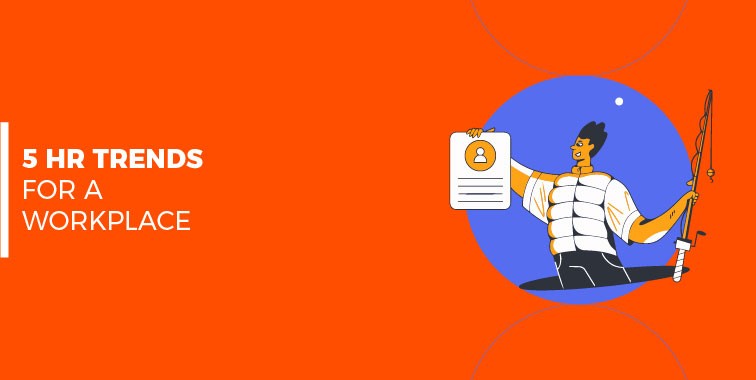User Experience (UX) Design: The Ultimate Guide
Understanding UX Design
The primary objective of UX design is to create experiences that are easy and efficient for the user. This could mean anything from the tangible feel of a physical product to the seamless nature of online processes, such as the user-friendliness of an e-commerce checkout.
In the words of Don Norman, a renowned Cognitive Scientist, and User Experience Architect, “User experience encompasses all aspects of the end-user’s interaction with the company, its services, and its products.” UX designers leverage market research, product development, strategic thinking, and design skills to craft cohesive user experiences for various products, services, and processes.
Distinguishing UX from UI Design
When talking about UX, the topic of User Interface (UI) design invariably arises. Despite their frequent interchangeability, it’s crucial to discern that UX and UI represent distinct concepts.
UI is responsible for the actual visual interface of a product, encompassing the design aesthetics of screens within a mobile app or the interactive elements a user encounters while navigating a website.
The scope of UI design spans everything from typography and color schemes to animations and interactive touchpoints like buttons and scrollbars. Ken Norton, Partner at Google Ventures and former Product Manager at Google highlights the disparity: “UX is focused on the user’s journey to solve a problem; UI is focused on how a product’s surfaces look and function.”
So UX and UI are interconnected as the design of the product interface significantly influences the overall user experience. At the same time, it’s vital to recognize their distinct roles in shaping a user’s interaction with a digital or physical entity.
Roles and Responsibilities of a UX Designer
The primary goal of UX designers is to enhance the user-friendliness and accessibility of everyday products, services, and technology.
The Design Thinking Process
Utilizing the Design Thinking Process, as illustrated in the diagram, UX designers navigate through four key stages: inspiration, conceptualization, iteration, and exposition.
The inspiration stage is for understanding and observing users. This involves extensive research, competitor analysis, and direct engagement with potential users to comprehend the problems or challenges. Feedback gathered from this stage is used to identify user goals, emotions, pain points, and behaviors, forming the basis for creating user personas.
Moving forward, the UX designer considers the objectives these personas seek to achieve when using a product, mapping out user flows by incorporating information architecture and techniques like card sorting.
Tasks of a UX Designer
Once user flows are established, designers visualize solutions for each step, creating wireframes and prototypes that serve as representations of the final product. Usability tests are then conducted to assess how users interact with the product, determining whether adjustments are necessary. UX designers regularly present their ideas and designs to key stakeholders.
The scope of a UX designer’s tasks varies based on the company’s size and specific needs. In larger companies, teams of designers may focus on distinct aspects of the process, such as research or visual design. Conversely, in smaller companies or startups, UX designers often wear multiple hats, handling a broad spectrum of tasks.
Tools Utilized by UX Designers
UX designers use diverse tools to carry out their tasks effectively. During the research and inspiration phase, survey and polling tools, along with video chat software, are employed for user interviews and information gathering.
For wireframing, prototyping, and usability testing, UX designers commonly use programs such as Figma, Balsamiq, InVision, and UsabilityHub, which have gained widespread popularity within the industry. Additionally, the integration of AI tools is on the rise, streamlining simpler tasks for increased efficiency.
In addition to design-centric applications, designers also leverage communication and project management tools to maintain a systematic overview of their work throughout the entire process.
Diverse Projects in UX Design
As the tech industry continues to expand, the scope of projects within UX design becomes increasingly diverse. Some notable applications include:
Product Design: Involves conceptualizing, creating, and refining physical or digital items to meet specific user needs, ensuring functionality, aesthetic appeal, and marketability.
Website, App, and Software Design: In the digital age, the success of websites, mobile apps, or software heavily relies on their usability. UX designers, alongside UI designers, play a crucial role in delivering a seamless online experience.
Voice Design: With the rise of voice interfaces, UX designers are pivotal in ensuring user-friendly interactions, especially with products like Amazon Alexa.
Virtual Reality (VR) and Augmented Reality (AR): As these technologies become more prevalent, UX designers are required to design immersive experiences, adapting their approach to ensure accessibility and user-friendliness.
Service Design: Goes beyond tangible objects and digital products, encompassing the design of experiences. This includes planning and organizing various components of a service to enhance quality and interactions with customers.
Essential Skills for UX Designers
UX designers come from diverse backgrounds, and a university degree is not always a prerequisite. Employers typically seek a blend of design skills, business acumen, and soft skills. Common requirements in UX designer job descriptions include:
- Proficiency in creating user stories, personas, sitemaps, wireframes, prototypes, and storyboards.
- Ability to plan and conduct user testing, surveys, and formal evaluations.
- Capacity to iterate work based on user testing data and qualitative feedback.
- Understanding of interaction design principles and information architecture.
- Ability to translate goals, objectives, and data into digital experiences.
- Familiarity with business metrics and the impact of designs on performance.
- Strong communication and presentation skills, including the ability to articulate design decisions to clients and stakeholders.
- Flexibility and adaptability.
The specific skills deemed essential or desirable may vary depending on the company and the nature of the role.
How to become a UX designer
So, how to become a UX designer and start your journey in this exciting profession? As we learned in the previous sections, UX design is a multifaceted field and requires a diverse skill set and a passion for user-centric design.
To get started in UX design, start with plenty of reading and research to get to know the UX workflow. Then you can start a comprehensive UX design course to jump into the profession. BDG offers an ultimate UX design course: UX Like an Adventure. This is a one-of-a-kind learning adventure, where we go beyond the conventional to explore the unexplored, challenge the norms, and ignite your creative sparks like never before.
This course will help you not only to master the basics of UX design but also to build your personal brand as a UX designer and kickstart your career.




